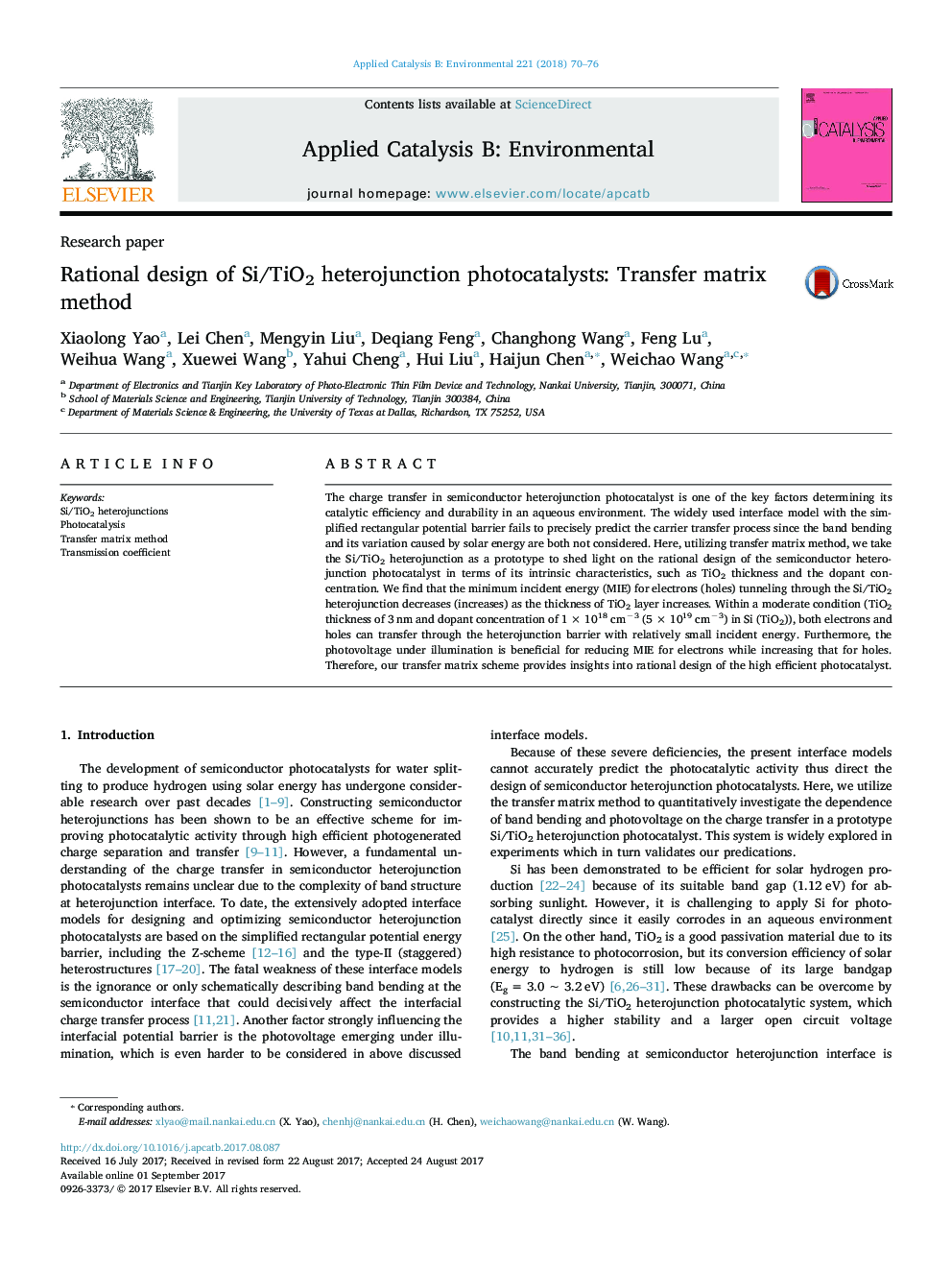| Article ID | Journal | Published Year | Pages | File Type |
|---|---|---|---|---|
| 6453394 | Applied Catalysis B: Environmental | 2018 | 7 Pages |
â¢The Si/TiO2 heterojunction photocatalyst is studied by transfer matrix method.â¢The intrinsic nature of heterojunction could change the charge transfer process.â¢The photovoltage could also strongly influence the charge transfer.â¢The optimized condition facilitating charge transfer is obtained.
The charge transfer in semiconductor heterojunction photocatalyst is one of the key factors determining its catalytic efficiency and durability in an aqueous environment. The widely used interface model with the simplified rectangular potential barrier fails to precisely predict the carrier transfer process since the band bending and its variation caused by solar energy are both not considered. Here, utilizing transfer matrix method, we take the Si/TiO2 heterojunction as a prototype to shed light on the rational design of the semiconductor heterojunction photocatalyst in terms of its intrinsic characteristics, such as TiO2 thickness and the dopant concentration. We find that the minimum incident energy (MIE) for electrons (holes) tunneling through the Si/TiO2 heterojunction decreases (increases) as the thickness of TiO2 layer increases. Within a moderate condition (TiO2 thickness of 3Â nm and dopant concentration of 1Â ÃÂ 1018Â cmâ3 (5Â ÃÂ 1019Â cmâ3) in Si (TiO2)), both electrons and holes can transfer through the heterojunction barrier with relatively small incident energy. Furthermore, the photovoltage under illumination is beneficial for reducing MIE for electrons while increasing that for holes. Therefore, our transfer matrix scheme provides insights into rational design of the high efficient photocatalyst.
Graphical abstractDownload high-res image (167KB)Download full-size image
